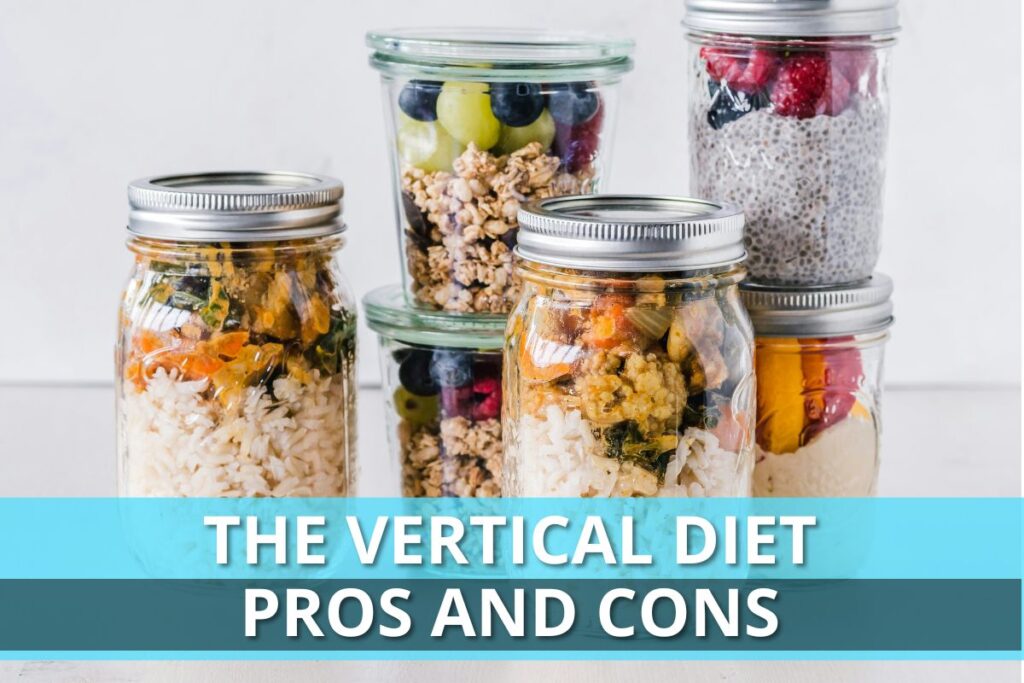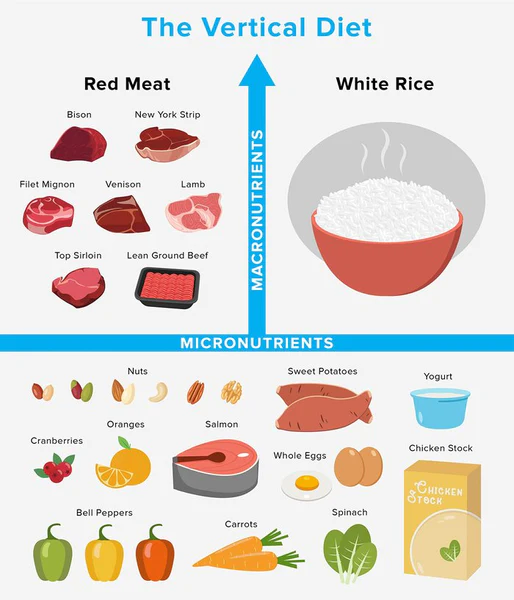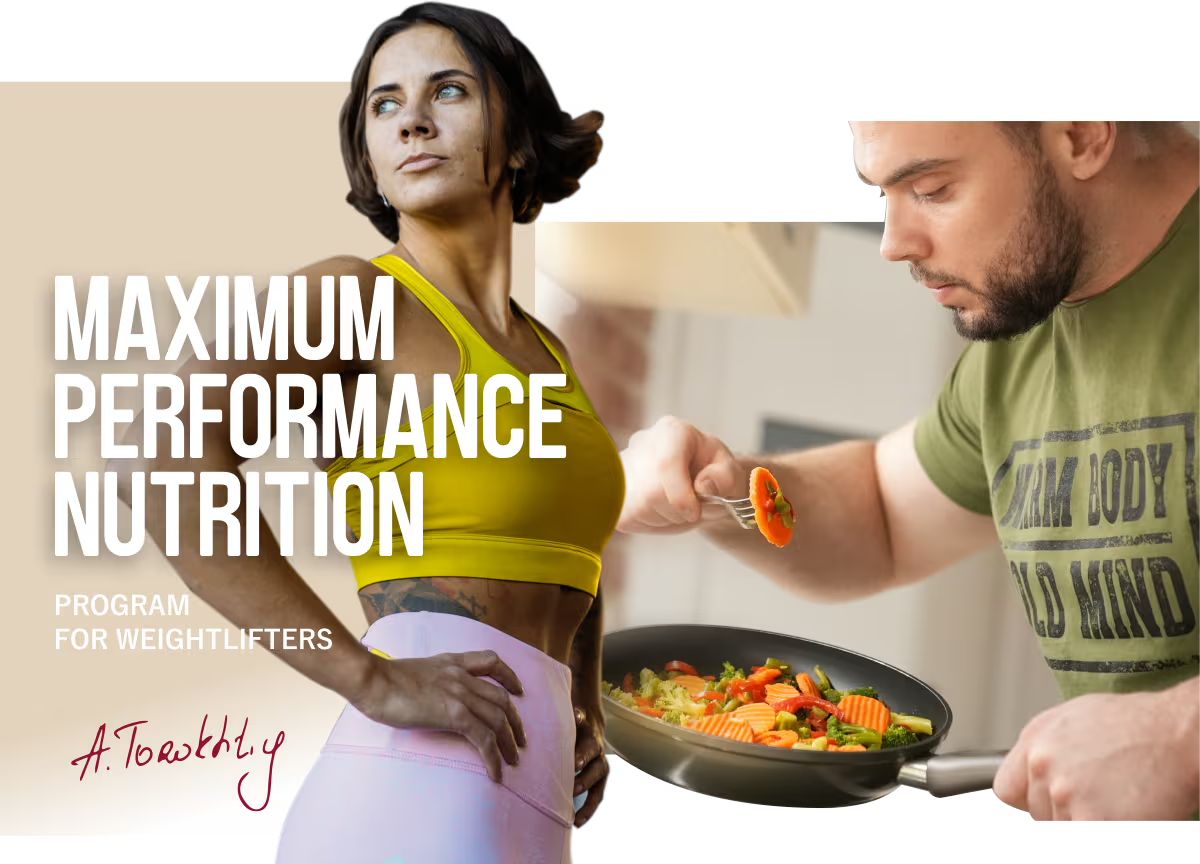The Vertical Diet: Pros and Cons
Author:
Unlock your full potential by engaging with our experts and community! Have questions about your fitness journey or looking for expert advice on weightlifting techniques? Don’t hesitate — leave a comment below and Sergii Putsov will provide a personalized answer and insights to help you reach your goals.
Torokhtiy is reader-supported. Some links are affiliate links, and we may earn a commission at no extra cost to you. See our disclosure page for details.
What Is the Vertical Diet?
Such an approach to nutrition is mainly aimed at the athletes that train hard and require high calories to provide a sufficient fuel and nutrients quantity for their workouts.

Besides, all the incoming calories and nutrients come from the most easily digested products that cause no problems to the gastrointestinal tract. And that is the main reason why white rice and potato are the key components of this nutrition approach.
So Why Is It Called Vertical?
Well, it has 2 basic pillars:
- Macronutrients (proteins, fats and carbohydrates) form a vertical line with central elements like red meat, white rice and potato located on its sides.
- Micronutrients are located under the horizontal line and serve as a basis for vitamins and minerals consumption. At the same time products from the FODMAP category are either completely excluded or severely limited. Such measures help to avoid unpleasant symptoms from the gastrointestinal tract such as abdominal distention and discomfort. I will put this in detail further.
Besides being the quality source of protein, red meat also contains saturated fats, cholesterol and zinc that are actively involved in the testosterone synthesis process. For strength athletes, it is quite a strong argument in favor of red meat. Red meat also contains a good amount of B group vitamins, iron and selenium.
You may like it:
You may be curious about the statement that rice must be exactly white and not brown or wild. It is because white rice loses the greater part of the fibers as it goes through the polishing process.
Fibers slow down and complicate nutrient absorption, this also applies to carbohydrates that rice is very rich on. But white rice contains a lot of starch and that makes it a very easily digested source of carbohydrates, it is a suitable meal to be taken 2-3 hours before the workout.
FODMAP is the acronym that means “fermentable oligo-, di-, monosaccharides and polyols”. These are short-chain carbohydrates poorly digested and absorbed by the small intestine especially in lifters with irritable bowel syndrome. These include fructose, lactose, and fructans, galactans and polyols.
Because FODMAP is not absorbed in the small intestine, they proceed into the large intestine and there get fermented by bacteria. Fermentation of these short-chain carbohydrates in the large intestine results in hydrogen and methane production. This problem is especially acute for some people, thus FODMAP exclusion helps to alleviate such symptoms.
Products high in FODMAP:
- Vegetables: artichoke, garlic, onion, pulses (lentils, beans, chickpeas, peas, soy products), asparagus, broccoli, cauliflower.
- Fruits: dried fruits, apples, pears, mangoes, grapes, cherries, watermelon, as well as fruit juices, high fructose syrups and honey.
- Milk and soft cheeses.
- Sugar-free gums and mints with sugar alcohols (polyols).
- Some grains are also rich on FODMAP, and that’s the reason to cut the consumption of rye and whole wheat bread, corn, couscous, bulgur, etc.
Which Products Are Included in Vertical Meals
As we’ve mentioned before, the vertical diet is based on white rice, potato and red meat: veal, beef, pork and so on. It is of the utmost importance to cook meat without excessive sauces and marinades that may contain lots of sugars from the FODMAP category.
The horizontal line is formed by the products not only covering our need in vitamins and minerals but also containing a small quantity of FODMAP:
Protein and fatty foods: eggs, salmon, yogurt, nuts (especially macadamia, peanuts and pine nuts). Cashews and pistachios contain a lot of fructans and may cause unpleasant symptoms.
Carbohydrates: citrus fruits, melon, strawberries, raspberries, pineapple, and vegetables: bell peppers, carrots, spinach, cucumbers, tomatoes and eggplants.
Pros of the Vertical Diet
There are some certain strong sides to this approach to nutrition:
- High calorific value, all needs of proteins, easily digested carbohydrates and fats are covered without any problems;
- This diet is easy to follow;
- It is very well tolerated by the gastrointestinal tract;
For better understanding let’s put in a nutshell each of these points. Weightlifters, bodybuilders and fitness athletes usually are big and strong guys, and their demand for calories, proteins, fats and carbohydrates significantly surpass such of an ordinary man. And when the daily ratio is based upon red meat and white rice the goal to acquire the specific calories and macronutrients amount is effortlessly achievable.
Even lean red meat contains enough fat and protein with all essential amino acids. White rice and potatoes are full of easily digestible carbohydrates that do not provoke any intestines discomfort.
Vertical Diet simplicity is related to quite a limited and undiversified product range. That’s one of the reasons why setting up the nutrition plan and following it is so simple.
Total exclusion or severe restriction of the products that are high in FODMAP makes this diet mild and facilitates the work of intestines.

Cons of the Vertical Diet
In my opinion, CONs of this diet outweigh its PROs. Let’s take a look at them.
❌ Monotony
The other side of the plainness that was previously mentioned as a PRO. Many products are excluded or limited, but the way intestines tolerate food is a very individual factor. Each diet must be specifically selected for every person. Excluding the whole group of fruits, vegetables and grains that have no evidence of causing any problems in this particular case may lead to the shortage of vitamins and minerals.
Besides, diets that lack diversity are likely to make you bored in a short while. When we decline or limit the whole list of products, we have to fill our vertical meals with the same food. It’s not a great thing for your health, nor is it good for your psychological comfort.
❌ Possible Lack of Fiber
As I’ve already said white rice is the central product of the Vertical Diet. On the one side it makes digestion and absorption run faster and easier, and on the other white rice is a polished product that has little fiber left. Sure you can obtain it from fruit and vegetables, but the restrictions put on grains and especially pulses highly impact the overall decline of fibers in the menu.
❌ Too Much Red Meat
Red meat is a great nutrients source, especially B group vitamins, zinc, iron, selenium and other minerals. But red meat is not a unique product. All the aforementioned nutrients can be obtained from lean fish and seafood, chicken, turkey and rabbit meat. Mussels, for example, contain much more B12 vitamins and iron than in veal, beef and pork. Rabbit meat has as much zinc as pork and more iron.
Red meat is considered to be one of the possible carcinogenic products, which is another important detail worth mentioning. The International World Cancer Research Fund (WCRF) recommends keeping your red meat as low as 350-500g per your weekly ration. This is about 3 servings. Also, red meat contains a large amount of saturated fats. Daily consumption of red meat can put your health at risk.
Conclusion
I don’t see anything unique about this nutrition approach. Each balanced menu must consider individual intolerance to specific foods. If any product provokes bloating or other symptoms it is quite obvious that it should be avoided.
To me, it seems that all PROs of the Vertical Diet are outweighed by its CONs. Fiber deficit and excessive amounts of red meat and saturated fats are the strongest reasons to look for “healthier” alternatives to this diet.
References:
- Photo by @ellaolsson, Unsplash.
- Photo by Bodybuilding.com.
Why Trust Us?
With over 20 years in Olympic weightlifting, strength training, nutrition coaching, and general fitness our team does its best to provide the audience with ultimate support and meet the needs and requirements of advanced athletes and professional lifters, as well as people who strive to open new opportunities and develop their physical capabilities with us.
By trusting the recommendations of our certified experts in coaching, nutrition, and sports training programming, as well as scientific consultants, and physiotherapists, we provide you with thorough, well-considered, and scientifically proven content. All the information given in the articles concerning workout programming, separate exercises, and athletic performance, in general, is based on verified data.
The product testing process is described in more detail here.
Author: Sergii Putsov
Head of Sport Science, PhD
Best Results: Snatch – 165 kg,
C&J – 200 kg
Sergii Putsov, Ph.D., is a former professional weightlifter and National team member, achieving multiple medals in the 94 kg weight category at national competitions. With a Master’s degree in “Olympic & Professional Sport Training” and a Sport Science Ph.D. from the International Olympic Academy, Greece, Sergii now leads as the Head of Sport Science. He specializes in designing training programs, writing insightful blog articles, providing live commentary at international weightlifting events, and conducting educational seminars worldwide alongside Olympic weightlifting expert Oleksiy Torokhtiy.




Still have questions after reading our article? Unlock your full potential by engaging with our experts and community! Don’t hesitate — leave a comment below and Sergii Putsov will provide a personalized answer and insights to help you reach your goals.